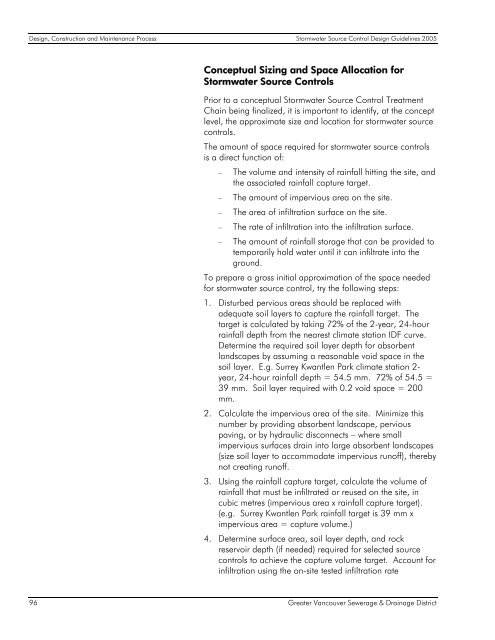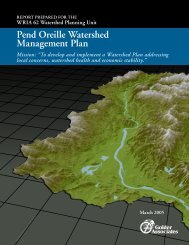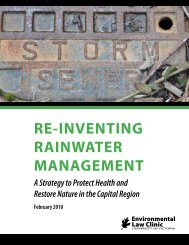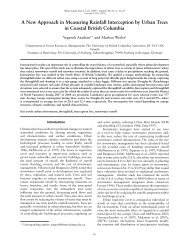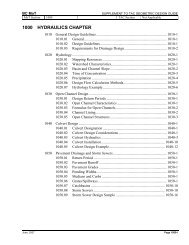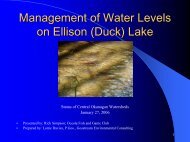Stormwater Source Control Design Guidelines 2005 - Waterbucket
Stormwater Source Control Design Guidelines 2005 - Waterbucket
Stormwater Source Control Design Guidelines 2005 - Waterbucket
Create successful ePaper yourself
Turn your PDF publications into a flip-book with our unique Google optimized e-Paper software.
<strong>Design</strong>, Construction and Maintenance Process <strong>Stormwater</strong> <strong>Source</strong> <strong>Control</strong> <strong>Design</strong> <strong>Guidelines</strong> <strong>2005</strong>Conceptual Sizing and Space Allocation for<strong>Stormwater</strong> <strong>Source</strong> <strong>Control</strong>sPrior to a conceptual <strong>Stormwater</strong> <strong>Source</strong> <strong>Control</strong> TreatmentChain being finalized, it is important to identify, at the conceptlevel, the approximate size and location for stormwater sourcecontrols.The amount of space required for stormwater source controlsis a direct function of:− The volume and intensity of rainfall hitting the site, andthe associated rainfall capture target.− The amount of impervious area on the site.− The area of infiltration surface on the site.− The rate of infiltration into the infiltration surface.− The amount of rainfall storage that can be provided totemporarily hold water until it can infiltrate into theground.To prepare a gross initial approximation of the space neededfor stormwater source control, try the following steps:1. Disturbed pervious areas should be replaced withadequate soil layers to capture the rainfall target. Thetarget is calculated by taking 72% of the 2-year, 24-hourrainfall depth from the nearest climate station IDF curve.Determine the required soil layer depth for absorbentlandscapes by assuming a reasonable void space in thesoil layer. E.g. Surrey Kwantlen Park climate station 2-year, 24-hour rainfall depth = 54.5 mm. 72% of 54.5 =39 mm. Soil layer required with 0.2 void space = 200mm.2. Calculate the impervious area of the site. Minimize thisnumber by providing absorbent landscape, perviouspaving, or by hydraulic disconnects – where smallimpervious surfaces drain into large absorbent landscapes(size soil layer to accommodate impervious runoff), therebynot creating runoff.3. Using the rainfall capture target, calculate the volume ofrainfall that must be infiltrated or reused on the site, incubic metres (impervious area x rainfall capture target).(e.g. Surrey Kwantlen Park rainfall target is 39 mm ximpervious area = capture volume.)4. Determine surface area, soil layer depth, and rockreservoir depth (if needed) required for selected sourcecontrols to achieve the capture volume target. Account forinfiltration using the on-site tested infiltration rate96Greater Vancouver Sewerage & Drainage District


